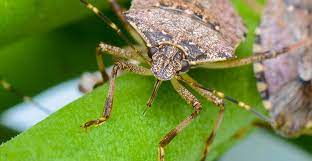The Brown Marmorated Stink Bug (BMSB) is a seasonal hitchhiking insect that may be carried on shipping containers and freight to countries all over the world where it is not native.
Where does the BMSB come from?
The stink bug, which comes from China, Japan, Korea, and other Asian countries, is a serious biosecurity hazard to Australia and New Zealand all year. The BMSB enters homes, automobiles, and factories in large numbers looking for somewhere to hibernate over the winter. They are prevalent in arriving goods throughout September and April in Australia because of the warmer climate. The season when BMSB risk exists is known as BMSB risk season.
Why are BMSBs a problem?
Stink bugs, which are known to cause illness in humans and animals, are a serious issue for the agricultural sector in Australia and New Zealand. To many people, stink bugs are an unpleasant-smelling irritant, but they pose a significant problem for the agricultural industry in these countries. BMSB has the potential to harm a wide range of food crops, feed crops, fibre crops, oil crops, ornamental plants, and industrial plants
Why are BMSBs a problem?
While stink bugs may appear to be harmless, Australia and New Zealand have a zero-tolerance policy toward them because they are dangerous. To many, stink bugs are an obnoxious stench, but to the agricultural sector in these nations, they are a major problem. Stink bugs can ruin food crops, feed crops, fibre crops, oil crops, ornamental plants, and industrial plants.
They pluck all nutritious value from crops, leaving the products not only lifeless and misshapen but also completely unsuitable for consumption and unmarketable. If not handled swiftly, these pests can destroy entire crop yields, costing the agricultural sector millions of pounds in losses. BMSB has no natural predators because it is one of the fastest-growing insects around – laying up to 200 eggs each year.
It’s simple to see how preventing a significant threat to agriculture before it spreads is necessary.
How is the Brown Marmorated Stink Bug dealt with?
BMSB Heat Treatment
The Brown Marmorated Stink Bug is fumigated using a heat treatment at the end of the season. It’s an incredibly quick and successful approach to getting rid of this bug from containers or shipments. It takes only 30 minutes to destroy pests when temperatures that are deadly to BMSB are reached. Heat treatment for cargo weighing less than 3,000kg will be done at 60°C for 10 minutes, while heavier goods will be treated for twice as long at 56°C. All other sizes will be subjected to half-hourly heating at 56°C.
BMSB Sulfuryl Flouride Treatment
This gas, when released, spreads throughout the space and fills every nook and cranny. The BMSB will gradually release fluoride from their body after being exposed to sulfuryl fluoride, and if enough exposure is provided, they will be destroyed.
Our experts will assist you in determining which of these therapies is appropriate for your site’s demands. With a delivery time of 12-24 hours, we can treat goods stored in containers or beneath blankets at sites all around the United Kingdom.
Pest Control
Metals, such as iron and aluminium, are also commonly used in containers. We can fumigate boxes with the permitted sulfuryl fluoride and phosphine for other pests such as Wood-boring insects Stored product insects Moths Pesticides made from metallic phosphine may be used to treat food crops, raw materials, finished products, packaging materials, and other goods including basketware and tobacco.
Insects and other pest species infestations are common in stored product commodities. Phosphine must be applied for a period of five to two weeks, depending on the issue, the goods, and the weather conditions.
Our staff can visit clients’ places of business, seaports, railway freight terminals, and storage sites throughout the UK.
Are fumigation treatments safe?
There is a danger to individuals opening and emptying containers if they are not first de-gassed when exporting countries fumigate their products before export and shipment. According to a Belgium-Netherlands poll, 11% of the 50,000 containers reviewed had toxic vapours or high gas levels. Many of these containers had never been fumigated.
Levels of hazardous chemicals were discovered in items ranging from shoes to electronics and paint, which were still drying out after production. Formaldehyde, Toluene, 1,2 Dichloroethane, Carbon Monoxide, and Ammonia are just a few of the compounds present.
Soy is a known allergen that can cause life-threatening allergic reactions, especially in individuals with soy allergies. The large amounts of estrogen found in SVO may also pose a health risk to humans who have not been immunized against the protein.
Discharging SVO into drains and waterways is highly dangerous for both wildlife and humans since it contains fish meal as an ingredient, which dogs might consume when swimming or wading through swamps or marshes. Furthermore, because SVOs are coated in antifreeze (also called “petroleum jelly”), they retain their temperature even after being submerged underwater for long periods. For example, if an individual were to fall ill after encountering these fluids (such as by eating ice cream
How do we help?
Safety is Urban Hawks top priority at which is why we provide a variety of substances for testing and ventilation to give peace of mind to all those who may be vulnerable. They can rapidly and safely remove poisonous gases via forced ventilation to remove the rest of the hazardous residues. Only when the gas levels in the container are below the Workplace Exposure Limit (WEL) will we issue a gas-free clearance certificate after their staff thoroughly tests them.
Get In Touch
Urban Hawks is proud to offer Fumigation Services and treatments for The Brown Marmorated Stink Bug for clients throughout the UK. If you are concerned about Brown Marmorated Stink Bugs on your cargo or have any questions, please don’t hesitate to contact our team. With over 25 years of experience, we are happy to answer any questions you may have and help you find the right solution to your pest problem.



